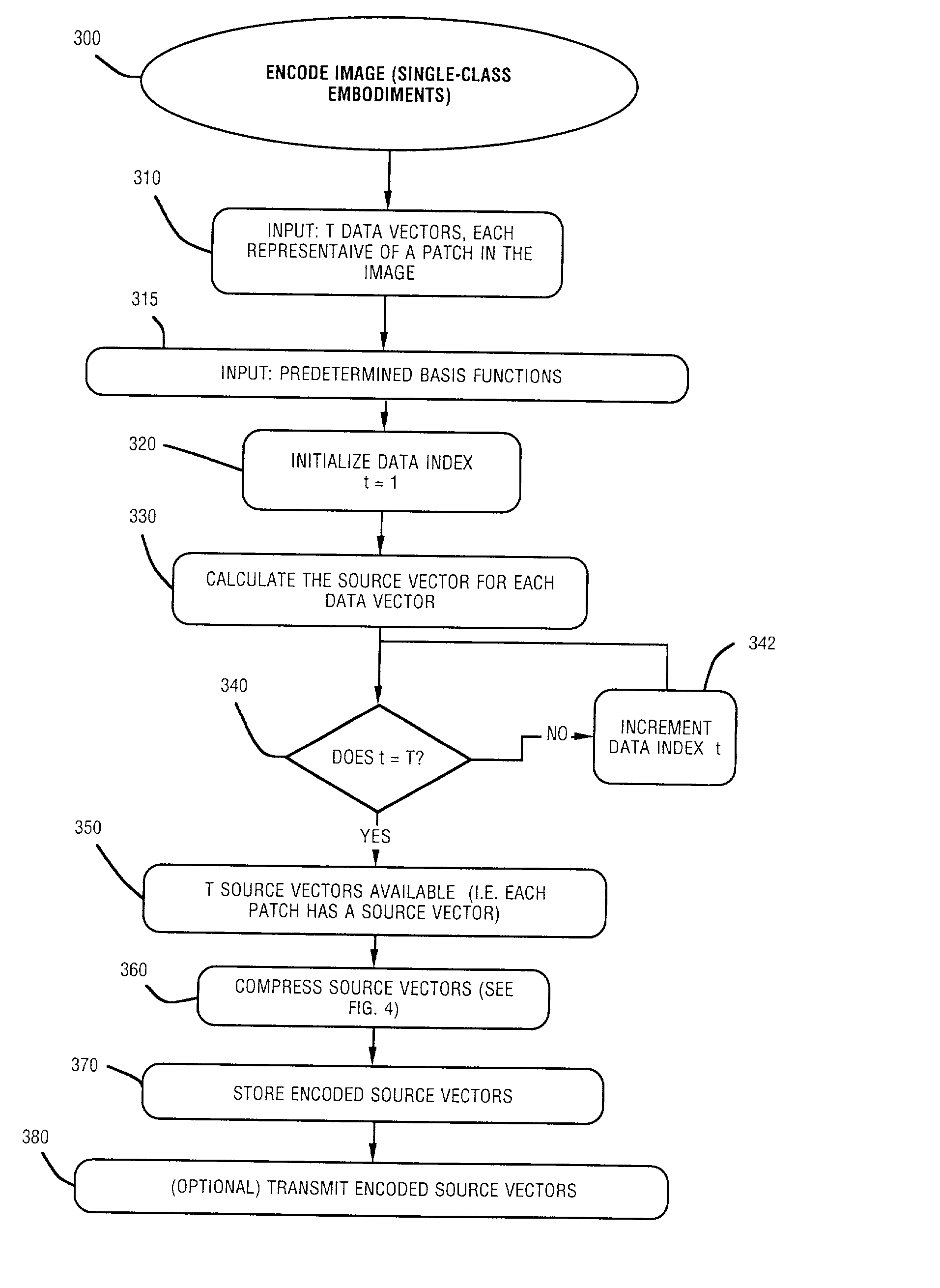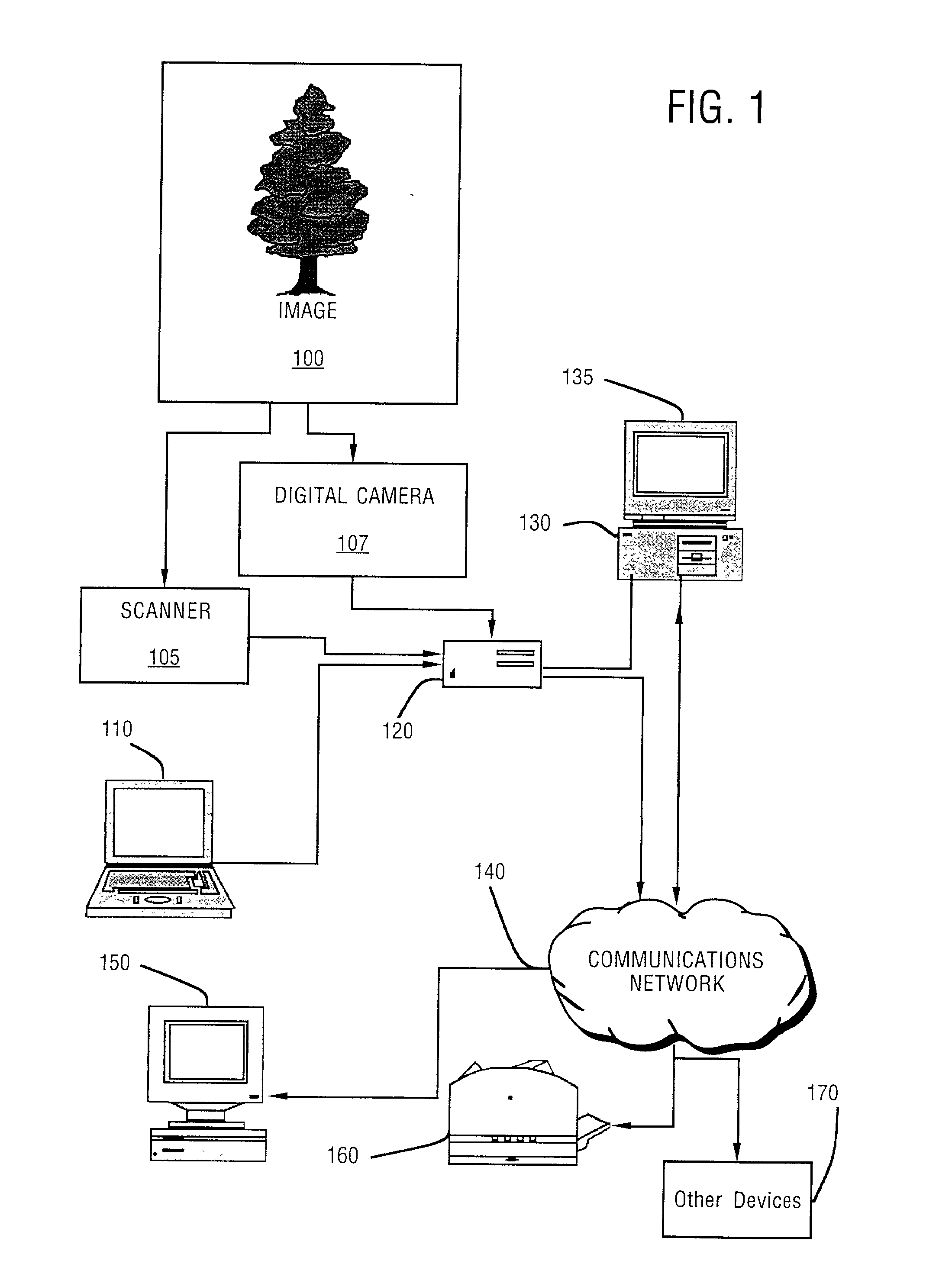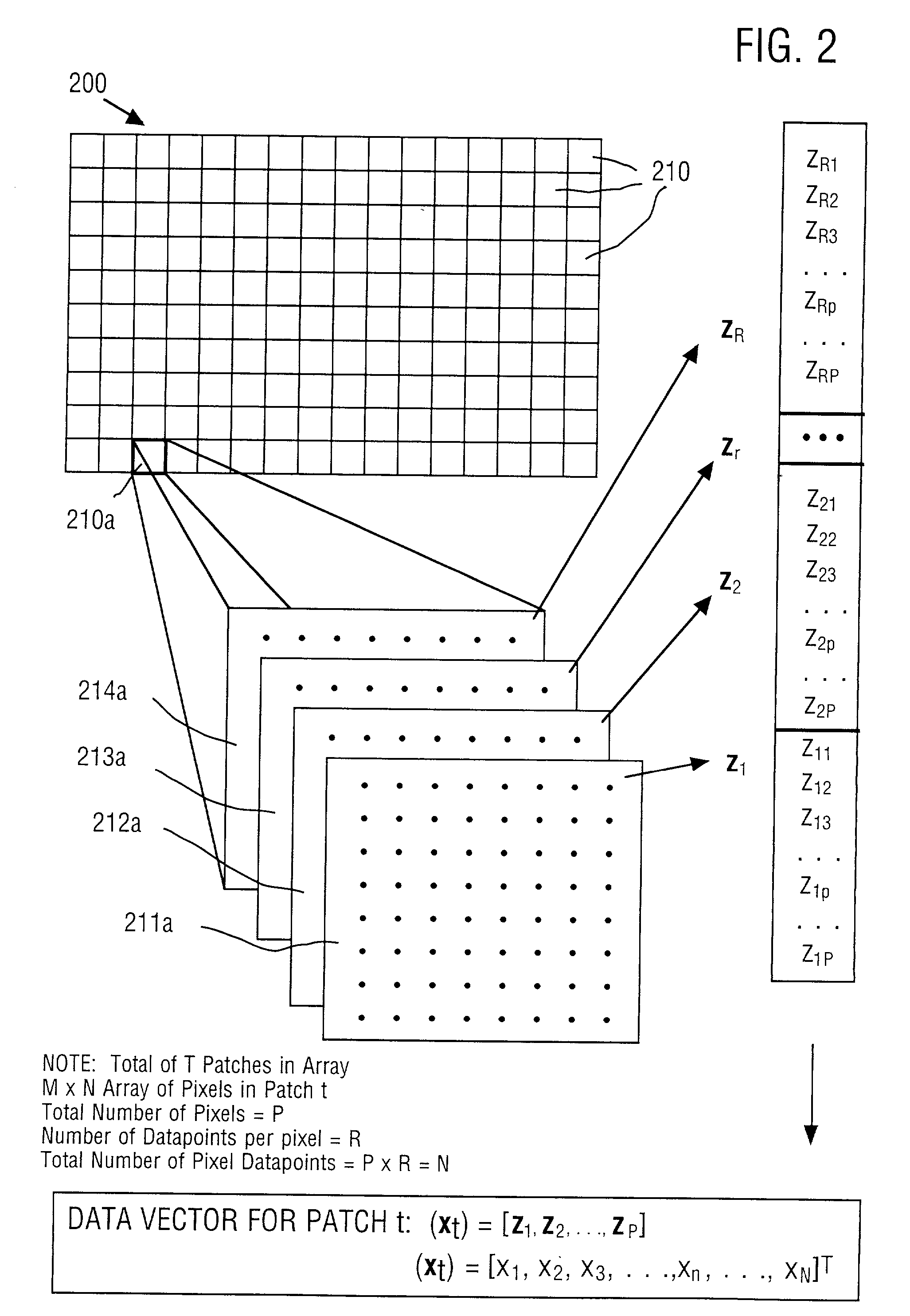Method and apparatus for efficiently encoding chromatic images using non-orthogonal basis functions
a chromatic image and non-orthogonal basis technology, applied in the field of computer-implemented systems and methods for encoding, compressing, and decoding images, can solve the problems of large jpeg files, large image quality loss, and difficult transformation
- Summary
- Abstract
- Description
- Claims
- Application Information
AI Technical Summary
Problems solved by technology
Method used
Image
Examples
Embodiment Construction
of ICA Basis Functions; and Comparison with PCA Basis Functions
[0137] As shown at 1420 in FIG. 14, each basis function can be represented in the form of an image patch, which is referred to herein as a basis patch. To construct a basis patch, each element of the basis function defines one respective pixel in the basis patch; i.e., each basis patch is defined by the elements of its respective basis function. Each basis function includes color information for the pixels in its corresponding basis patch, and therefore the chromatic properties of each basis patch (i.e.each basis function) can be represented by the set of pixel coordinates in color space.
[0138] Color space refers to the way in which a color is defined; for example RGB color space defines a color in terms of the relative contributions of red, green, and blue in the color. One color space discussed herein-the LMS color space-maps the human eye's response in the form of L, M, and S values. Particularly, the LMS color space ...
PUM
 Login to View More
Login to View More Abstract
Description
Claims
Application Information
 Login to View More
Login to View More - R&D
- Intellectual Property
- Life Sciences
- Materials
- Tech Scout
- Unparalleled Data Quality
- Higher Quality Content
- 60% Fewer Hallucinations
Browse by: Latest US Patents, China's latest patents, Technical Efficacy Thesaurus, Application Domain, Technology Topic, Popular Technical Reports.
© 2025 PatSnap. All rights reserved.Legal|Privacy policy|Modern Slavery Act Transparency Statement|Sitemap|About US| Contact US: help@patsnap.com



